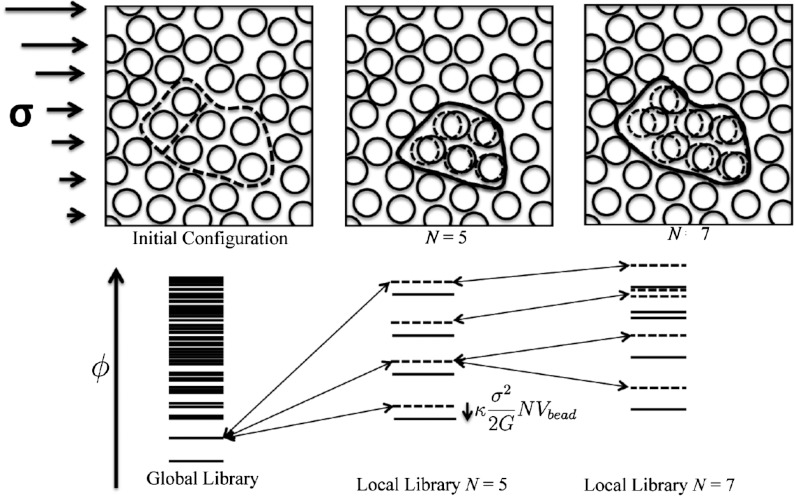Fig. 1.
We show in the upper part of the figure schematic snapshots of local rearrangement starting from an initial frozen configuration in an imposed stress field σ. Following Lubchenko and Wolynes (22) the lower left panel shows the spectrum of possible free energy minima for a large sample of glass. Levels are listed in order of the internal free energy ϕ, comprising the potential energy along with a vibrational entropic contribution. When the glass is trapped in a single such state, local regions of size N can rearrange to new minima while only weakly disturbing their environment elastically. Connected energy levels are shown in the next two panels. When an imposed stress σ is imposed the energy levels are shifted and the energy cost of moving N particles is reduced by an amount (κσ2/2G)NVbead where G is the elastic modulus and κ is a factor that includes the elastic response of the environment that does not shift to a new minimum. Vbead is the volume of a molecular unit. Eventually for sufficiently large N a distinct structure is formed coincident in free energy with the initial state, allowing irreversible motions to occur.

